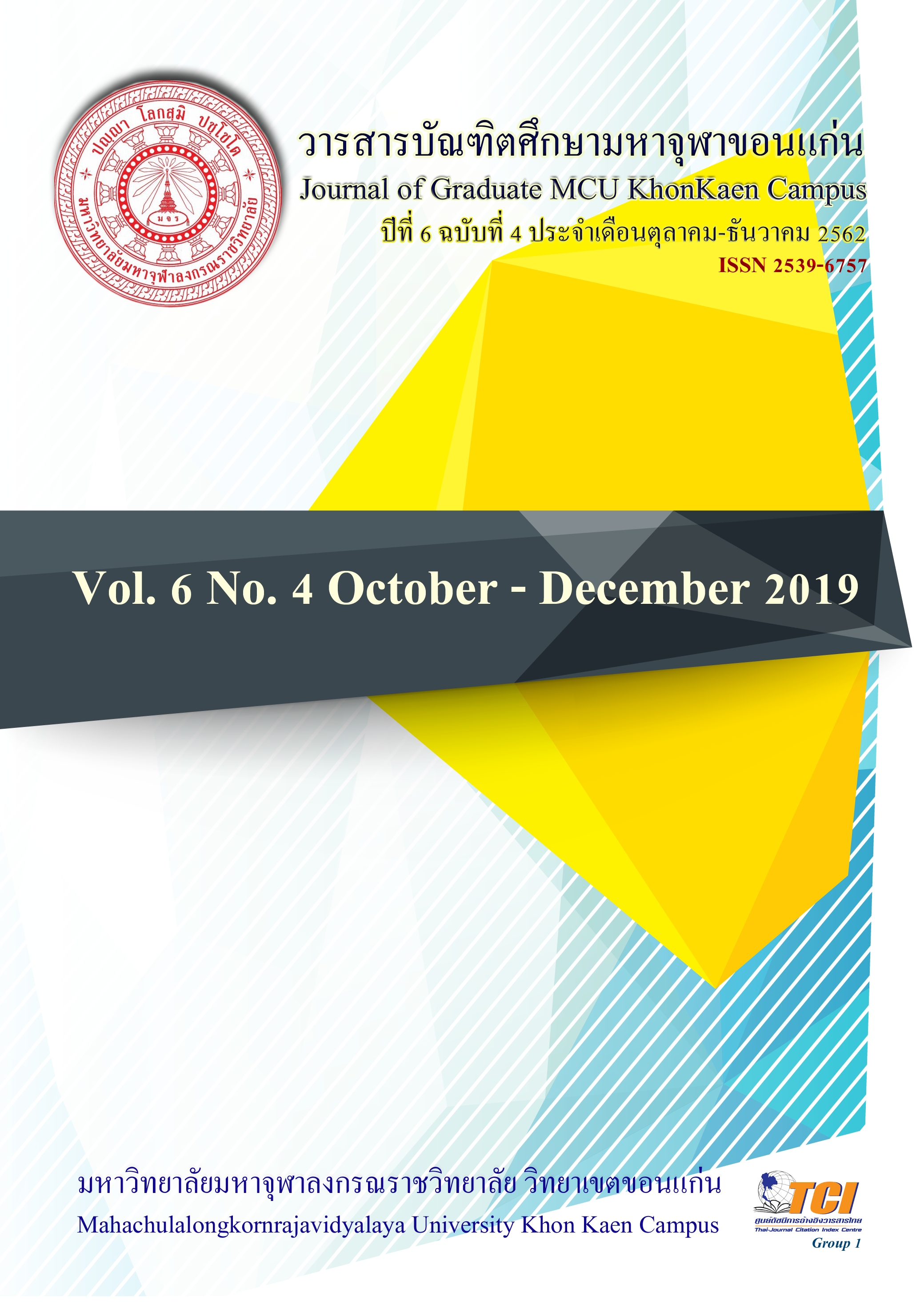Strategic Development of Primary School Administrators’ Attributes for 21stCentury
Main Article Content
Abstract
The objectives of this research were 1) to study the components and indicators of primary school administrators’ attributes for 21stcentury, 2) to study the current condition and the desirable attributes and their needs assessment and 3) to create strategies for development of primary school administrators’ attributes for 21stcentury. The mixed-methods research was applied. The research was divided into 3 phases. Phase 1-studying the components and indicators of the administrators’ attributes. Phase 2-studying the current condition and the desirable attributes of primary school administrators. Phase 3-creating the strategies for development of the school administrators’ attributes. The sample groups were school directors, and teachers with a total number of 370 persons altogether by means of stratified random sampling. The research instruments were structured interview form, questionnaire with reliability of 0.98 and IOC between 0.60-1.00. The statistics used for data analysis comprised frequency, percentage, standard deviation and priority need index (PNIModified).
The research results are as follows:
- The components of the primary school attributes for 21stcentury are composed of 5 key aspects. Those are desirable leadership, vision, human relations, work relations and creativity / innovation.
- With regard to the study of current condition compared with the desirable attributes and needs assessment of the administrators’ attributes, the current state, in all, is at moderate level. Considering each and individual aspect, the current conditions of all aspects are moderatelevel. As for the aspects of the desirable conditions, in all, are at high level. While considering each and individual item, it is found that 4 desirable components are at the highest level while one component is at high level. The priorities of needs assessment are 1) creativity/innovation,2) vision, 3) desirable leadership,4) human relations, 5) work relations, respectively.
- The strategies for development of primary school administrators’ attributes for 21stcentury comprised 5 key aspects. Strategy 1−development of creativity and new innovation in the organization with 5 measures and 7 indicators. Strategy 2−enhancement of visionary leadership for 21stcentury with 6 measures and 6 indicators. Strategy 3−enhancement of leadership attributes of 21stcentury with 6 measures and 9 indicators. Strategy 4−encouraging and supporting creative human relations with 6 measures and 6 indicators. Strategy 5−increasing efficient task–related competencies with 6 measures and 7 indicators. In all, there are altogether 5 strategies with 29 measures and 35 indicators.
Article Details
References
. (2015). Academic Paper on School Administrators in 21st Century, The 1st National Academic Conference on Education: Educational Management for Local Development in ASEAN Community – A New Direction of Education in 21st Century, Kalasin University.
ChompornPhamontri. (2015). Characteristics of School Administrators In 21st Century As Perceived And Expected By Teachers under The Office of Secondary Educational Service Area 27. Journal of Graduate School 13(63). October-December. 2016.
DawruwanThawinkarn (2015). Superleadership as a Leadership in The 21st Century. Journal of Educational Management of Khonkaen University, 11(2) p.p. 23-36. 2015.
Johnson,L.R.(2003). Performance Evaluation of Special Education Administrators: Considerations and Recommendations, NASPP Bulletin.82(9): 24-32.
KanungnitKijvitee. (2016). Characteristics of School Administrators in the 21st Century under Phranakhon Si Ayutthaya Primary Educational Service Area Office 1. Dissertation on Education Program In Educational Administration, Graduate School Committee Office, Phranakhon Si Ayutthaya Rajbhat University
Kennedy & Dresser. (2005). An Integrative Investigation of Person-vocation Fit. Person-Organization Fit, and Person-job fit Perceptions, Dissertation, Ph. D (Philosophy). Denton: Graduate School, the University of North Texas, Denton. Photocopied.
Ministry of Education. (2003). School Administration’s Manual. Bangkok: Printed by Express Transportation Organization of Thailand.
National Education Act (4th ed.) (2019), Royal Government Gazette, Vol.136 Chapter 57., 1 November 2019.
PatcharinChaichan. (2017). Strategies for Educational Management in the 21st Century of Schools under Department of Local Administration, Northeastern University.
PimtadaWatjanawongpanya. (2012). Strategies for the Development of Thai-Style Leaders’ Characteristics of Administrators in Basic Education Institution. Dissertation in Educational Management under the Department of Educational Policy, Management and Leadership, Bangkok: Faculty of Education, Chulalongkorn University.
PrakrongBoonKrong. (2015). Strategies for Leadership Development of School Administrators under Primary Education Office. Dissertation in Educational Management, UbonRatchathani Rajabhat University.
Surat Duangchathom. (2012). Professional Administrator. from https://www.google.co.th (2018)
SuwimonWongwanich. (2003). Direction for Assessment of Learning. Bangkok: Faculty of Education, Chalalongkorn University.
Wason.G. and Glaser, E.M. (2000). Watson-Glaser Critical Thinking Appraised Manual. New York: Harcourt Brace and Work Inc.

